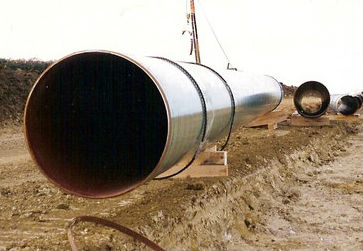Natural Gas Surpasses Coal as Biggest US Electricity Source

Natural gas overtook coal as the top source of U.S. electric power generation for the first time ever earlier this spring, a milestone that has been in the making for years as the price of gas slides and new regulations make coal more risky for power generators.
About 31% of electric power generation in April came from natural gas, and 30% from coal, according to a recently released report from the research company SNL Energy, which used data from the U.S. Energy Department. Nuclear power came in third at 20%.
A drilling boom that started in 2008 has boosted U.S. natural gas production by 30% and made the United States the world’s biggest combined producer of oil and natural gas. Hydraulic fracturing has allowed energy companies to tap huge volumes of gas trapped deep underground in shale formations.
That has driven the price of natural gas sharply lower to levels about a third of what they were just 10 years ago.
At the same time, power companies have been installing more natural gas turbines at their plants as they make them more flexible and retiring some older coal-fired facilities. They have long switched between natural gas and coal, depending on commodity prices. However, new regulations that aim to restrict the emission of greenhouse gasses, and the risk that more are on the way, have added pressure to make the switch.
The burning of natural gas produces carbon dioxide and nitrogen oxides, but far less than coal.
The Obama administration next month is expected to complete a so-called Clean Power Plan intended to cut earth-warming pollution from power plants by 30% by 2030. The rule will set the first national limits on carbon dioxide coming from existing power plants and set in motion one of the most significant U.S. actions ever to address global warming. The United States limits emissions of arsenic, mercury and lead pollution from power plants, but there are no national limits on carbon pollution from power plants.
Congressional Republicans have vowed to block the rule and some GOP governors have said their states will not comply.
These regulatory and price changes have begun to play out in usage data.
Federal data shows that in April, the amount of electricity generated with natural gas climbed 21% compared to April 2014, while the amount generated with coal fell 19%.
In April 2010, 44% of electric power generation came from coal and 22% from gas, according to SNL Energy.
The amount of coal and gas used will continue to vary depending on price.
The EIA said in a May report that it expects the level of coal-generated electricity to rebound as natural gas prices rise later this year and coal-fired plants return from spring maintenance. Overall, the EIA expects about 36% of total U.S. electricity generation to come from coal in 2015 and 31% to come from natural gas.
Related News
Related News

- Keystone Oil Pipeline Resumes Operations After Temporary Shutdown
- Biden Administration Buys Oil for Emergency Reserve Above Target Price
- Freeport LNG Plant Runs Near Zero Consumption for Fifth Day
- Enbridge to Invest $500 Million in Pipeline Assets, Including Expansion of 850-Mile Gray Oak Pipeline
- Williams Delays Louisiana Pipeline Project Amid Dispute with Competitor Energy Transfer
- Evacuation Technologies to Reduce Methane Releases During Pigging
- Editor’s Notebook: Nord Stream’s $20 Billion Question
- Enbridge Receives Approval to Begin Service on Louisiana Venice Gas Pipeline Project
- Russian LNG Unfazed By U.S. Sanctions
- Biden Administration Buys Oil for Emergency Reserve Above Target Price




Comments